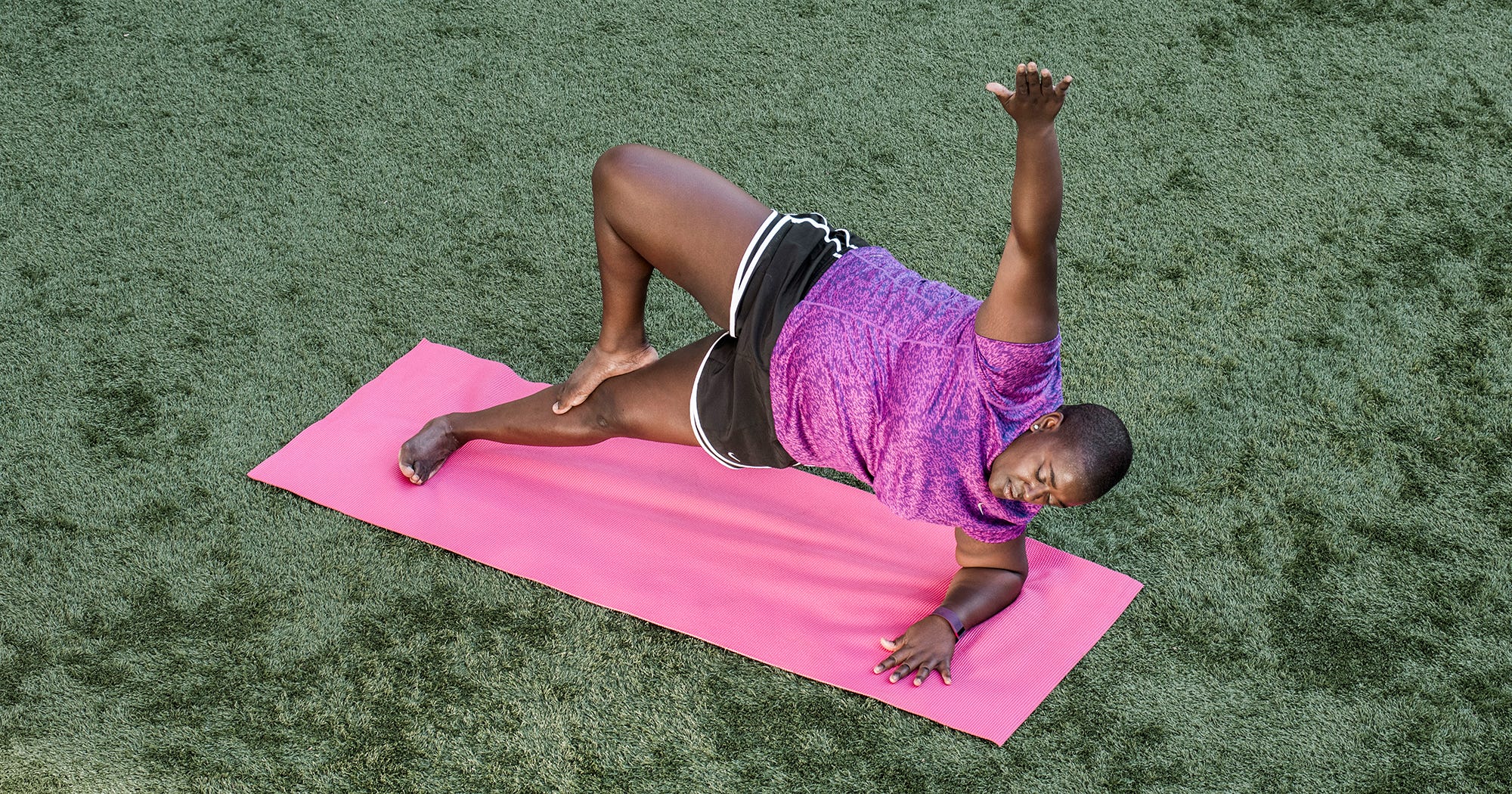
Pregnancy stretches to strengthen the back can help a pregnant woman avoid sciatic nerve pain and keep her core healthy. There are also stretches that will help her hamstrings or piriformis. This article will help you to avoid back pain and keep your back healthy during pregnancy. Here are some examples of these exercises:
Stretching during pregnancy
Stretching during pregnancy is good for back pain. First, it is safe for your baby and your entire body to stretch during pregnancy. Stretching during pregnancy can help you deal with discomfort and prepare you to give birth. To stretch correctly during pregnancy, keep these tips in mind:
First, stretch at an easy pace. You will find that you will be able to stretch more easily during pregnancy. You should not stretch too far as your joints and ligaments will not allow for it. If you feel tightness or discomfort, then stop and go slow. You should not be doing more than five minutes per day, unless you have the ability. Before you begin your pregnancy stretching program, make sure you consult your doctor.

Next, do heel sits to stretch the buttocks as well as your lower back. With your heels flat on floor, you should place your feet on the floor. A block or blanket can be placed under your bottom to increase stretch. Hold each stretch for about ten to twenty seconds. Repeat this exercise two or three times. You'll soon feel more flexible. This exercise can be done by both partners and pregnant women.
Stretching to relieve sciatic nerve pain
The hip flexors, located in the buttocks, are responsible for basic leg movement and core stabilization. They may tug on the sciatic nervous during pregnancy. To relieve sciatic nerve pain, pregnant women should practice hip flexor stretches. This releases pressure on the sciatic. This type can help alleviate pregnancy hip pain. However, the key is to not overstretch.
First, find a comfortable place to sit and not twist when lifting objects. This is the first step in treating sciatica while pregnant. Once you're seated, stretch the back muscles and do some gentle exercises. For the right exercises, talk to your doctor. Try a few home stretches if these exercises have not worked for you. Avoid lying down on your stomach during pregnancy. This could cause pressure on your large veins, which can lead lightheadedness or weakness. The second step is stretching your hips.
Stretching your hamstrings
One of the most important muscles you can stretch during pregnancy is your hamstrings. They attach to the pelvis sitting bones and control the opening and closing of the leg. Hamstring tightness is common due to sedentary living, driving a vehicle, and crossing your legs. Hamstring flexibility is 90 degrees or greater at the groin and knee. If you're pregnant, you should do the following stretches to keep your hamstrings flexible during pregnancy.

Do not place your shoulders too close to your ears when doing hamstring stretching during pregnancy. Also, keep your spine straight and your spine straight. Each stretch should be held for five to ten minutes. Then, repeat the process. If you can, do the stretches along with your partner. This will strengthen the back muscles, which will allow you to carry the pregnancy in comfort. You'll also be avoiding excess weight gain, which can cause back pain and put pressure on already fragile joints.
Stretching for Piriformis
Piriformis pain or sciatica is one of the most common problems that pregnant women have. Because pregnancy alters the center gravity, the hips expand and contract. As a result, the piriformis muscle goes into overdrive, pinching the sciatic nerve and causing pain in the lower back, buttocks, and even down the leg. This pain can be relieved by stretching the piriformis muscle during pregnancy.
The pigeon stretch in a chair is another good stretching for piriformis during pregnancy. Begin by sitting with your legs straight out parallel to the floor. Next, bend forward and place your right foot on the floor. Repeat the process three times. If you feel tightness in your muscles, use a foam roller to massage them. Consider a prenatal massage or a session with a physical therapy professional to help you achieve a more complete stretching routine.
FAQ
How can one determine if they have a mental health condition?
When symptoms interfere with daily life, a person can be diagnosed with a psychological illness. The symptoms of mental disorders vary from person-to-person. The most common symptoms are feeling depressed, sad, anxious, guilty and hopeless, lonely or depressed, as well as guilt, shame, guilt, guilty, guilty, guilty, suicidal and worthless.
If a person meets at least three of the four criteria below, they may be diagnosed with a mental disorder.
-
Disturbed thoughts or feelings
-
Disturbed behavior
-
Disturbance of functioning
-
Reduced ability to relate to others
What causes mental health problems in adolescents
Adolescence allows us to begin to form our identities. As individuals, we start to understand who we are and where we fit in the society.
This is a time when we make new friendships and have romantic relationships. These experiences can be stressful.
Normal stress is normal. However, if you feel stressed beyond your usual levels, you should seek professional help.
Although you might believe you are capable of handling things on your own, sometimes you need to talk to someone else.
During times when you are stressed, your friends and family can help. They can also teach you ways to manage stress.
For example, you could take up exercise or meditation. Both of these activities can help you reduce stress.
In addition, you could join a group such as a sports team or church. You will meet new people and make new friendships.
Is it more important to have mental health than work?
Everybody needs to be healthy, especially when they are working. It is important to take time to relax, whether you're at work or with friends.
You should speak to your boss if you are struggling with relaxation. They may be able offer suggestions to ease your stress.
It is also important to take care of your health. It's important to eat right, exercise regularly, take enough rest, and get plenty of sleep.
What are some examples for mental-emotional disorders?
Any condition that causes serious distress or impairment of functioning is known as mental disorders. Depression, anxiety, schizophrenia and borderline personality disorder are some examples of mental disorders.
How can I improve my mental health?
Mental health is important for everyone, especially when we are stressed out from work, school, family, etc. The best way to improve your mental health is to exercise regularly, eat healthy food, sleep well, and spend quality time with loved ones. Exercise makes us feel happier and releases endorphins. Our bodies also function better when we eat healthy foods. Sleeping well gives us energy throughout the day. Spending quality times with loved one improves relationships and reduces stress.
Statistics
- It does have some influence, but not nearly as much as we might think, so focusing less on attaining wealth will likely make you happier (Aknin, Norton, & Dunn, 2009); (positivepsychology.com)
- Neuropsychiatric diseases are the leading cause of death and disability in the U.S., accounting for 18.7 percent of all years of potential lifespan loss and premature mortality.
- More than 40 million adults in the United States have an anxiety disorder, but less than 37% of people seek mental health treatment for their symptoms. (talkspace.com)
- It means no drinking any alcoholic beverages and no taking any drugs that aren't 100% natural.
- Similarly, for positive mental health, there is likely to be substantial agreement about some typical components (e.g., resilience to stress) 6, and controversy about more atypical components (e.g., career consolidation). (ncbi.nlm.nih.gov)
External Links
How To
How to Care For Autism Children
Autism spectrum disorder (ASD), which is a neurodevelopmental disease, causes repetitive behaviors and social impairments. ASD affects approximately 1 in 50 people. There is no cure.
The first symptoms usually appear during infancy, around 18 months old. Most common symptoms include difficulty understanding emotions of others, lack eye contact, problems in language development, and difficulties learning new skills. These symptoms can lead to aggression, self-injury and depression.
While there is no cause currently, scientists believe that genetics play an important role. ASD can be caused by environmental factors, such as infection, stress, diet, medications, vaccines and alcohol. Evidence also suggests that certain viruses, such as rubella or measles, can increase the likelihood of developing ASD later on in life.
Even though early intervention and diagnosis are important, many families have trouble with their child's behaviour once they reach school age. The severity of the symptoms and how much support is needed will determine the treatment options. However, research has shown that treatments that emphasize social interaction and reduce problem behavior can make some difference.